Last year the National Crime Victimization Survey turned up a remarkable statistic. In asking 40,000 households about rape and sexual violence, the survey uncovered that 38 percent of incidents were against men. The number seemed so high that it prompted researcher Lara Stemple to call the Bureau of Justice Statistics to see if it maybe it had made a mistake, or changed its terminology. After all, in years past men had accounted for somewhere between 5 and 14 percent of rape and sexual violence victims. But no, it wasn’t a mistake, officials told her, although they couldn’t explain the rise beyond guessing that maybe it had something to do with the publicity surrounding former football coach Jerry Sandusky and the Penn State sex abuse scandal.
Shared posts
The way we board airplanes makes absolutely no sense
Most US airlines follow the same procedure for allowing non-first-class passengers to board a plane. They let people who are sitting in the back board first, then people in the next few rows, gradually working their way toward the front.
This procedure makes absolutely no sense.
The Data shows this is not a good way to board an airplane
If asked to devise a boarding method without any data, you might settle on this as a pretty sensible one. But the airlines do have data — and numerous studies have shown this is not a good way to board an airplane, in terms of time or customer satisfaction.
The fastest ways to board a plane are Southwest's boarding method — where people choose their own seats — or a theoretical boarding method known as the "Steffen method" that's not currently in use.
Both simulations and real-life experiments have proven the standard method to be the slowest out of several different ones. In 2012, the TV show "Mythbusters" recruited 173 people to compare four methods in a replica airplane interior and found that Southwest's boarding method was the fastest. A close second was allowing all windows seats to board first, then all middles, then all aisles (outside-in).

The worst way to board a plane
Here's a video showing the standard boarding process, used by the vast majority of airlines:
You can see the problem with this process pretty clearly in the video: people spend a lot of time waiting in line in the aisle.
That's because when each passenger goes to sit, there's a good chance someone who's already sat down in that row will have to get up to let him or her in, slowing everything down (the only way this can be avoided is if they happen to arrive in window-middle-aisle order). At any given time, most of the people who are boarding are trying to access the same few rows and the same few overhead bins, so everyone has to do a lot of waiting in the aisle.
Having the back board first seems logical, but all it does is move the line onto the plane, instead of the jet bridge.
A slightly better way: the random method
Surprisingly, just letting people get on the plane in an order unrelated to their seats leads to slightly faster boarding times than the standard method.
US Airways began doing this in May 2009: they let frequent fliers and the like board first, then everyone else, by order of check in.
This method is a bit faster because at any given time, most of the people boarding the plane are not trying to get in the same few rows and overhead bins at once. There's still some congestion — because of people needing to get up to let others in — but it's staggered throughout the plane.
An even better way: the outside-in method
Having everyone with window seats board first, regardless of row, then all people with middle seats, then all people with aisle seats is much faster.
United Airlines switched to this method in June 2013 (although they make an exception for families, allowing them to board together).
This method cuts down on the total amount of congestion because each time a passenger sits down, no one is already sitting in their row, so they don't have to wait for someone to get up to allow them in. Because everyone isn't trying to get in the same few rows at the same time, many different passengers can access the overhead bins and enter their seats simultaneously.
The small downside is that people who are sitting together can't board together, a problem for families with children and couples who inexplicably require continuous physical contact.
The fastest (current) way: the Southwest method
Southwest Airlines uses the unassigned seat method: people get on the plane in their order of check in, but they have no assigned seat, and can just sit down wherever they like. Sadly, there is no video for it, but it is the fastest way to board a plane that any airline currently uses.
The downside of Southwest's method is stress
It works because passengers spend less time waiting in line in the aisle. If there's a line in front of you or someone taking a long time to put their bag in the overhead bin, you have the freedom to just sit down in the row you're standing at currently instead of waiting to get past. In doing so, you're clearing the aisle and making things faster for the people behind you.
The downside of this method is that some people get stressed about the idea of having to choose their own seat and don't like waiting in line (or checking in online) for the chance to pick earlier. People also like to sit with friends and family, and passengers who pick their seat later on in the process might not find any blocks of open seats together.
In the "Mythbusters" experiment, this method led to lower customer satisfaction scores, even though it was fastest. The nearly as fast outside-in method scored much higher.
The very best (theoretical) way: the Steffen method
Jason Steffen, a physicist who got interested in plane boarding while stuck in line at the Seattle airport and subsequently conducted much of the research in this area, came up with an even better boarding system using computer models.
Steffen's method is a close relative of the outside-in method, but instead of allowing all window seat passengers to board first, it creates a choreographed sequence of them to avoid any aisle-waiting at all.
Basically, window seat passengers from one whole side of the plane are sent in, followed by the window seat passengers from the other side. But the rows of passengers allowed in are staggered, so you never have multiple passengers using the same aisle space to sit down or put their bags into the overhead bins. (Example: you send in 36A, 34A, and 32A, then 35A, 33A, and 31A).
This eliminates waiting while someone in your row gets up to let you in (like the outside-in method), but also makes sure that at any given time, the passengers getting on are accessing completely different rows and overhead bins, further cutting down on congestion.
This method wasn't tested in the "Mythbusters" episode, but Steffen tested it himself. His experiments were simpler (they used a 72-seat plane), but they showed the Steffen method was faster than the standard, random, or outside-in methods.

Unfortunately, he didn't test the Southwest method, so we don't know for sure which is faster. But given how it compared to the other methods, it seems like the Steffen method would at least be competitive with Southwest's. And for a passenger, it would feel roughly like the outside-in method, so it'd probably be much less stress-inducing.
So why don't airlines use the best methods?
A great question. These methods are all unquestionably faster than the standard method, so would speed up the turnaround times, theoretically saving airlines money. But almost none of them use it.
The current system might make airlines more money than they'd save by switching
One possible answer is that the current system actually makes them more than they'd save by switching. As Businessweek pointed out, airlines often allow some passengers to pay extra to board early and skip the general unpleasantness. If the entire boarding process was faster to begin with, many people might not pay extra to skip it.
For passengers, though, this makes no sense. Most of us are waiting in line longer than necessary, and those who pay extra are sitting on planes longer than necessary. No one is getting to their destinations any faster, and everyone is paying higher base prices for tickets, because airlines have to pay extra to the crew for their time used during these delayed turnarounds.
Woman makes dolls to replace people in her village
The already-tiny village of Nagoro in eastern Iya on Shikoku, Japan is shrinking. Only a few dozen people still live there. The others have died or moved away. Ayano Tsukimi, 64, makes life-sized rag dolls to replace them and positions them in places that were important in their lives in Nagoro. Director Fritz Schumann made a mini-documentary about this "Valley of Dolls."![]()
Mexican Black Bears Scale The Side of A Mountain With Expert Rock Climbing Skills
In this incredible video posted by Stephanie Latimer, a Mexican Black Bear and her cub expertly scale the side of Santa Elena Canyon in Mexico this past March.
The 1970s Japanese Version of Spider-Man Was a Motorcyclist Who Received His Powers From a Dying Alien
In 1979, the Tokyo-based Toei Company produced a live-action Spider-Man television series, which was based on Marvel‘s friendly neighborhood Spider-Man. They had an entirely different take on the web slinger. Their version of Spider-Man was taken on by young motorcycle racer, Takuya Yamashiro, who was played by Shinji Tôdô. The motorcyclist received his special powers from a dying alien who crashed on Earth and injected Takuya with some of his own blood. You can stream episodes of the Japanese Spider-Man series online at Marvel.
video via Roman Glukhov
via TIME
Photos of large spiders eating bats

Oddity Central has a photo gallery of "Bat Predation by Spiders."
Read the rest
New poll on sex with robots
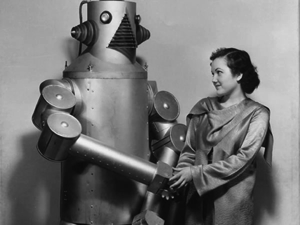
One in five people in the UK would be willing to screw a robot, according to a new survey cited in the Daily Beast. That's all? The question was part of a study, by Middlesex University (seriously), that asked 2,000+ people about their views on technology. Apparently, 46% of those polled said they'd either have sex with a robot or at least not judge others who do.
How a study of sex similarities got spun into a story of sex differences
Software to trick your boss so you can take a break
Satellite launch debris found in Brazillian Amazon

A fisher on northern Brazil's remote Uriandeua river stumbled on a huge chunk of detritus dropped from a UK Space Agency satellite launch. "It is the launch vehicle payload shroud from the Alphasat launch last year," a UK Space Agency spokesperson told the BBC. "It probably landed in the Atlantic and then floated inland." Brazil has asked the UK to come collect their space garbage.![]()
Designing the packaging for cricket protein bars
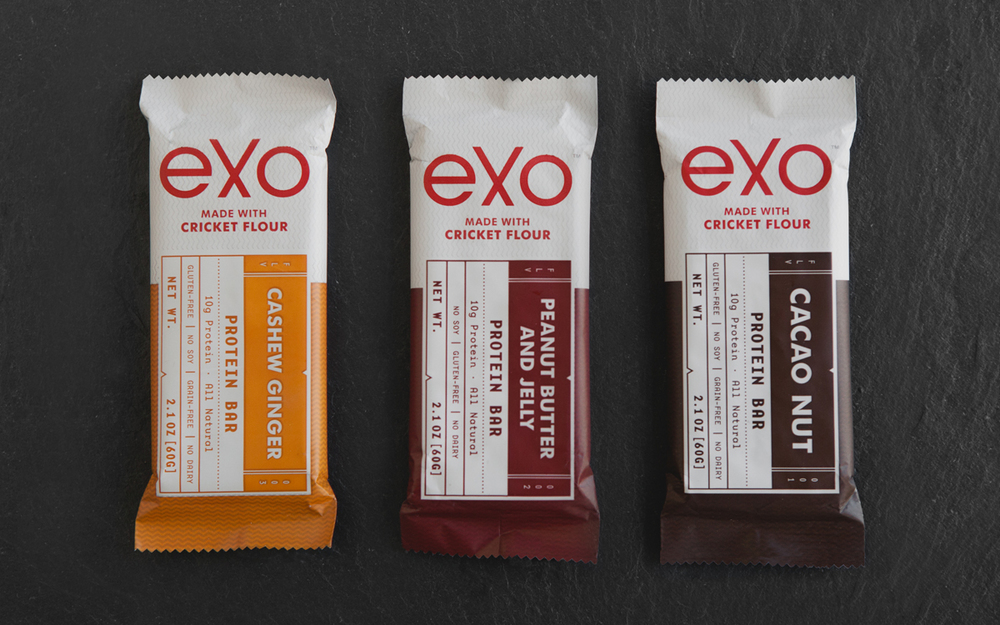
How do you package a protein bar made from cricket flour? Here's how. Exo raised $54.9K on Kickstarter last summer, as a pair of Brown roommates took their senior year project to the next level, trying to come up with a sustainable protein source, along with help from molecular gastronomy superstar Heston Blumenthal. The packaging was designed by New York's Tag Collective. ![]()
6 Superpowers That Really Exist
We know many animals have abilities we don’t. We don’t tend to think of them as "super;" they’re just different. But what if they could become human abilities? What if some humans already have them?
In my (R)evolution novels (Gemsigns, Binary and Gillung) it’s important for the abilities engineered into gems (genetically modified humans) to feel plausible; I didn’t want any gem to be able to do something that hasn’t already been documented in a living creature somewhere on this planet. But their abilities still needed to be, well, super. Turns out this wasn’t as difficult as I feared. I found out some amazing stuff during my research – including the existence of real-life human mutants. Here are six of my of favorite superpower factoids.Bioelectrogenesis: Electric eels (which are more closely related to catfish than true eels) can generate both low and high voltage electrical charges, using special organs that take up more than three quarters of their body. An adult eel can deliver a shock of up to 500 volts and 1 amp of current – probably not enough to kill an adult human, but you wouldn’t want to test it.
Biosonar: Okay, you already know about the sophisticated echolocation systems of bats and dolphins. But did you know some humans have also developed a form of sonar? There’ve been documented cases of people who have lost their sight learning to navigate by emitting clicking sounds and building up a picture of their environment from the echoes that come back. We’re not talking Daredevil yet, but it may only be a matter of time…
Electroreception: Sharks have specialised organs called the ampullae of Lorenzini that enable them to sense the electromagnetic fields produced by other living things. They use it to find prey, and possibly to navigate by detecting the movement of ocean currents through the Earth’s magnetic field. Talk about being able to sense the planet.
Sight: We come out pretty well on this one. Human vision is astonishing – few other animals can see as many colours as we can, to say nothing of our ability to focus on tiny details up close, and see clearly far into the distance. But we don’t see everything. Consider the mantis shrimp, which has trinocular vision (we’re binocular), at least twelve photoreceptors (we have three), and the ability to perceive polarised light. It’s almost impossible to imagine what it ‘sees’, but it’s more than we do. Closer to home, cats and dogs have the kind of night vision that means they aren’t likely to bang into the coffee table while mounting a midnight raid on the kitchen. No animal can see in complete darkness – sight is a function of light – but they can decipher detail in light levels that are imperceptible to humans. They’re also great at focusing on fast-moving objects, such as fleeing prey, and – along with some other mammals, and many birds and insects – can see ultraviolet (UV) light.
Smell. You probably think I’m going to talk about dogs again, and it’s true that their olfactory sense is several hundred thousand times greater than ours. But bears are even better – a polar bear can smell a seal buried under three feet of snow from half a mile away. Some sharks can detect blood at one part per million. And if we get away from noses entirely, the antennae of some male luna moths can detect a single molecule of a female’s sex pheromone at a distance of more than six miles.
Strength: This is the closest thing to an X-Men moment you’re going to get from me – and it’s pretty darn close. There have been at least two documented cases of a mutation in humans that triggers accelerated muscle growth and extraordinary strength right from birth; it happens when both copies of a myostatin-producing gene are defective, is extremely rare, and no one knows what the long term health consequences are. Having said that…the child in whom the mutation was first identified could, at age four, hold two 6.6 lb weights with his arms extended. That’s the equivalent of 3 litres of water. In each hand.
Use of word "so" undermines your credibility
 I sometimes start my sentences with, "So, ..." (any episode of Gweek will be full of examples). But it irks me when other people do the same! Consultant Hunter Thurman gives three reasons why the word "So" sucks: It insults the people you are addressing, it undermines your credibility, and it "demonstrates that you are not 100% comfortable with what you are saying."
I sometimes start my sentences with, "So, ..." (any episode of Gweek will be full of examples). But it irks me when other people do the same! Consultant Hunter Thurman gives three reasons why the word "So" sucks: It insults the people you are addressing, it undermines your credibility, and it "demonstrates that you are not 100% comfortable with what you are saying." Rather than just plainly answering their question, you’re relying on the crutch of a practiced blurb. Usually, whatever follows “so” is a carefully crafted sentence, evolved over many iterations and audience reactions.
There’s a reason we do it. In psychology, it’s what’s known as a “marker.” It’s a little cue to our cognitive mind that says, “Quick, call up that part that we practiced.”
Use of word "so" undermines your credibility (Via Lifehacker)![]()
Profile of death-defying cliff climber Alex Honnold
[Video Link] I missed this 2011 60 Minutes profile of Alex Honnold, who climbs very high sheer cliffs by himself and without ropes. (Via All Good Found)![]()
Should London be the world’s first urban national park?

London is many things. But is it a place of outstanding natural beauty, such as the Yorkshire Moors, Yellowstone National Park or the Sahara desert? Anyone who has taken a train through Croydon or driven along the North Circular will answer that question with a fervent, resounding and forceful ‘fuck, no’. And there’s no denying that London’s natural beauty is oftenoverlooked in favour of its grand buildings, dingy back alleys and myriad public houses. But perhaps people just aren’t looking hard enough, or in the right places. That’s certainly the idea behind a campaign which aims to have London declared the world’s first urban national park.

Sound far-fetched? What if we told you that more than 60 percent of London is green space and water? That it’s home to 1,500 species of flowering plant and 300 species of birds? That it has 142 nature reserves and an estimated 3.8 million private gardens? Not to mention the incredible diversity of languages, cultural institutions and Unesco World Heritage Sites that make this city so brilliant. Not laughing now, are you? The organisers of the Greater London National Park campaign have started a petition that you can sign to support the initiative. After all, we can all do with a reminder now and again of just how lucky we are. Even in Croydon.
Find out more at greaterlondonnationalpark.org.uk.
Sony Crams 3,700 Blu-Rays' Worth of Storage in a Single Cassette Tape
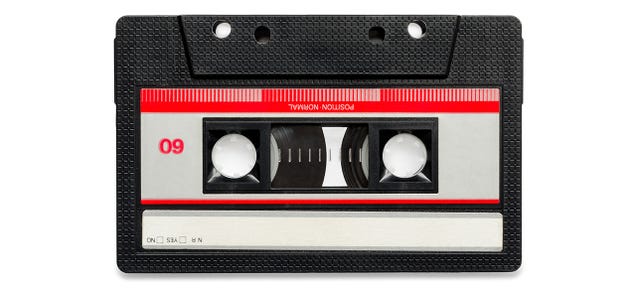
Stupid hipster 80s fetishism notwithstanding, cassette tapes don't get much love. That's a shame, because magnetic tape is still a surprisingly robust way to back up data. Especially now: Sony just unveiled tape that holds a whopping 148 GB per square inch, meaning a cassette could hold 185 TB of data. Prepare for the mixtape to end all mixtapes.
Make a "perpetually"-flying paper airplane
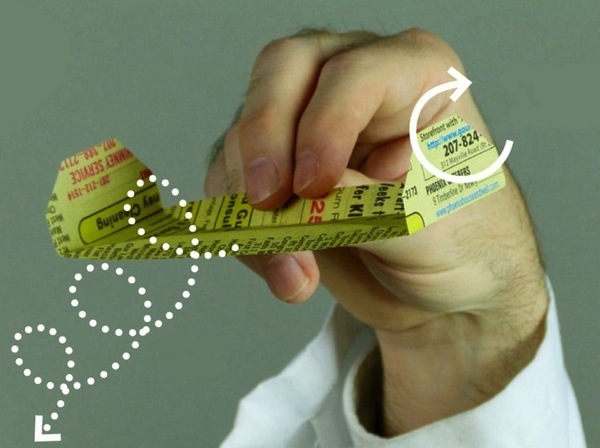
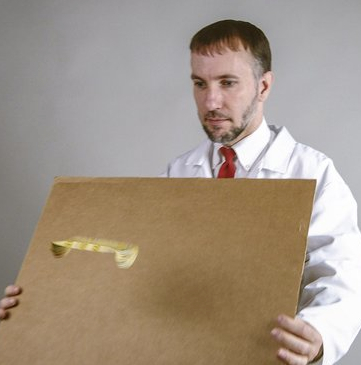
A walkalong glider is a type of model plane that's kept aloft, theoretically indefinitely, by someone walking along with it as it flies, generating rising air using a piece of cardboard, paddle, or even your body. Smithsonian Air & Space posted a template and instructions for making a simple paper walkalong glider. The plans come from a recent book by Stephen Voltz and Fritz Grobe (better known as the Mentos and Diet Coke guys) titled "How to Build a Hovercraft: Air Cannons, Magnetic Motors, and 25 Other Amazing DIY Science Projects."![]()
Broadband, Net Neutrality and airplane boarding: industries' love affair with stupid

As you probably know, we board airplanes in just about the worst, most inefficient way possible (this is the best way). The airlines know this, but stupid boarding remains the order of the day. That's because stupid boarding involves charging rich people more to skip the stupid, and participate in the slightly-less-stupid of eating warm nuts while you hang around waiting for everyone else to endure the maximally stupid.
The thing is, this isn't just stupid, it actually costs the airlines a ton of money -- in aviation, time is money, and stupid wastes a lot of time. Much more than they make from charging special skip-the-stupid/eat-warm-nuts fees. But there you have it. They're addicted to stupid, because stupid makes money, while smart merely saves (even more) money.
As Mike Masnick points out, this kind of stupid is a perfect microcosm of the terrible behavior we're likely to see as a result of the US FCC abolishing Net Neutrality and allowing Net Discrimination:
Broadband providers insist they need to do things like prioritize some traffic in order to deal with network congestion, but that's bogus. It's only the non-technical management who makes those claims. Ask the technology guys, and they will quickly say that basic upgrades can easily accommodate all traffic. But the broadband providers are now like the airlines. They could very easily offer a better overall service, but they're quickly recognizing that by offering a crappy service, they can charge more to get a select few to pay up for a "fast lane" approach. So the incentives are totally screwed up. There's little incentive for airlines to improve the boarding process, so long as having such a crappy process leads people to pay extra fees to avoid the crappy process.
In the broadband space, it's even worse, because there's even less competition, so there are even fewer incentives for the broadband providers to actually do the necessary upgrades. Instead, they have all the incentive in the world to make their broadband connections purposely inefficient, to pressure people into paying more. Is it really any wonder that Netflix streaming quality was so terrible until Netflix suddenly agreed to start paying up.
Just like the airlines, broadband providers have little incentive to actually build what's best, and plenty of incentive to degrade the general experience.
What Inefficient Airline Boarding Procedures Have To Do With Net Neutrality
(Image: Diet coke and warm nuts. , LWYang, CC-BY)![]()
Dogs lick toads to get high
Meanwhile, down under...
Queensland dogs are getting high by licking the poison off cane toads. Vets are warning some pooches may become addicted to the hallucinogenic and are risking their lives trying to get their next toad fix. It's being reported the dogs have worked out how to lick the toad just enough to get high. "This phenomenon of animals deliberately getting intoxicated by cane toads, it's fascinating," says veterinarian Megan Pickering. "It just seems unbelievable that an animal will go back for a second try.
The goodies in my menu bar
![]() David likes to tease me about the many items in my iMac's menu bar (above). Today I came across Brett Terpstra's post about his menu bar items. He even has a menu bar app called Bartender that adds a second row of menu bar items!
David likes to tease me about the many items in my iMac's menu bar (above). Today I came across Brett Terpstra's post about his menu bar items. He even has a menu bar app called Bartender that adds a second row of menu bar items!
I plan to install some of Brett's favorites on my computer (Visits and Dropzone for sure) and make my row of menu bar items even longer.
Here are my current menu bar items, from left to right:
1. Fantastical. A calendar and reminder application that works with Google Calendars.
2. Airmail. The best email app for Gmail users. It takes a long time to load the email when I launch it in the morning, but it's much speedier than web-based Gmail. And it's only $2!
3. Tweetbot. It's not a very intuitive Twitter application (I still have trouble doing certain things because the interface hides a lot of stuff and puts things in the wrong place) but it's still better than any other Twitter app I've tried.
4. Google Drive. I switched from Word to Google Docs years ago. Google Drive, where I store my writing, behaves like an ordinary folder on my computer.
5. TextExpander. I'm a fast hunt-and-peck typist, but my error rate is high. This keyboard shortcut app lets me type in a few characters, like "adr," which immediately get expanded into my full address and phone number. It's got more powerful features that make it worth buying even though OS X has a built-in keyboard shortcut utility.
6. Adobe Creative Cloud. Never mind about this one.
7. AudioSwitcher. It lets me switch audio inputs and outputs without opening System Preferences. I use this many times a day.
8. Chrome Notifications. I don't think this works. I need to look into it.
9. Divvy. I use this more than any other menu bar item. I have divvied up my display into a 6 x 6 grid. With hotkeys I can resize and move any window into one or more of the grids. It's $15 but I've had it for over a year and have used it thousands of times.
10. 1Password. A terrific password manager. I use a different password for every online account I have. They passwords are long strings of gibberish generated by 1Password. I have the app on my phone, too, so I can access login info wherever I am.
11. Evernote. I have thousands of scanned paper documents in Evernote. Every scrap of paper than comes into my life goes into Evernote and then gets shredded and recycled. (I use a ScanSnap document scanner with Evernote. Read my review of this life-changing machine here.)
12. Backblaze. $5 a month backs up my computer's hard drive and attached hard drives. A good deal for peace of mind.
13. Adobe Updater. Like item 6 above, this is a waste of space. I need to get it off my menu bar.
14. Bitcasa Infinite Drive. I stopped using Dropbox after suspicionless-wiretapper Condoleezza Rice joined Dropbox's board. I'm currently evaluating cloud-storage alternatives to Dropbox. So far, Bitcasa is performing beautifully. 20GB for free, and 1TB is just $10/month. This is much cheaper than Dropbox, and more importantly, "the Bitcasa Platform keeps your digital belongings safe and secure by encrypting all your files before they’re uploaded -- you, and only you, have access to your stuff. Not even Bitcasa employees can see your files!" Dropbox, on the other hand, has serious privacy concerns, and its recent move to add Rice to its board was the last straw.
15. Time Machine. I need to get Bartender to add this to a second, hidden, row.
16. Bluetooth. Ditto
17. Wi-Fi
18. Output volume
19. Date and time
20. Spotlight. Very slow and hard to use. Can anyone suggest a replacement?
Whew! That took a lot longer than I thought. I hope this is useful to some of you. If you use menu bar items that you love, let's hear about them in the BBS!![]()
New book explores various arguments for the value of the humanities
Author of new book explains why no one case can be made for the importance of the humanities -- and why the arguments must be different in America and Britain.
Study finds that faculty members are more likely to respond to white males than others
Study finds faculty members more likely to respond to inquiries from prospective graduate students who are white males. Business faculty appear to favor white men most, humanities and arts professors the least.
Your Post-Workout Protein Shake Should Be Loaded With Insects
Excerpted from Edible: An Adventure Into the World of Eating Insects and the Last Great Hope to Save the Planet by Daniella Martin, out now from New Harvest.
$45 a Month for Unlimited Coffee
Each day, millions of customers flow through Starbucks stores in more than 60 countries. It has over 200 locations in Manhattan alone, which explains why it’s hard to walk a few blocks in the city without seeing the green logo. But an Israeli startup that soft-launched in New York City last week just might be the David to Starbucks’ Goliath.
